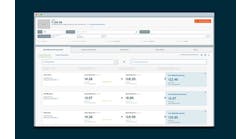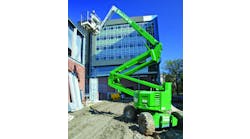I know a lot of you read the industry news that we publish. While each story is of interest in itself, many of those stories reveal indications of trends that lie underneath the surface.
Take this month's issue for instance. A lot of the stories show some indications of the progress and recovery the rental industry has made the past couple of years (See Industry News, page 12). Aerial Access, an independent aerial equipment rental specialist covering the Gulf Coast, made an acquisition. It's a small one, but it's the kind of expansion a company of that size might have been reluctant or unable to make two years ago. Hertz Equipment Rental Corp.'s acquisition of a platform-size company as big as Pioneer Equipment also might not have occurred during the throes of the recession.
The continuing expansion of Volvo Rents continues to surprise a lot of industry observers, and United Rentals' opening of a number of specialty branches also shows that the major players are certainly not passively standing still.
GE Capital providing a $75 million asset-based credit facility to Acme Lift was another telling sign. Again, I would have been surprised at such a story a couple of years ago. It's an indication of more credit being available for rental companies, relative to their size and financial capability. The same goes for Noble Iron. Many in the industry were very surprised to see Texada Software — now evolved into Noble Iron — get into the equipment rental and distribution business. This venture also would not likely have taken place two years ago, although the seeds were being planted at that time. And $10 million financing for rental fleet for a relatively unproven company? Not likely back then.
The growth of National Trench Safety is another impressive development. I remember well when this company got its start less than a decade ago, growing the old-fashioned way, one store at a time over the years to the point where it now operates coast to coast and is able to offer its customers national-account relevance. And how about Sunbelt Rentals' fiscal first-quarter numbers?
United Rentals' chief financial officer Bill Plummer was named one of the 100 most powerful executives in corporate America by Black Enterprise magazine. Plummer is one of the most creative, forward-thinking people I've met in this industry regardless of color and I wouldn't have been the least bit surprised if he was named one of the most creative, intelligent executives of any race in corporate America. I know that others who have had the chance to communicate with him would agree. For the rental industry to be on the radar screen for such a ranking is another noteworthy development.
Those of you who find our news coverage to be valuable, I hope you are aware that we put out a twice-weekly newsletter that publishes a lot more news than we have room for in the pages of this magazine. So if you aren't subscribing to RER Reports, delivered twice weekly to your e-mail inbox, go to our website at www.rermag.com and sign up for a free subscription. The only criteria to qualify is being interested.
Our annual technology issue is in your hands and a lot of you are well aware of some of the rental applications that are available to you on your smartphone. Many rental companies are taking advantage of the latest technology to empower their sales staff to be able to access inventory availability through their phones or figure out rates, reserve a machine for their customer, and many more capabilities. With 54.9 percent of U.S. mobile subscribers owning smartphones as of June 2012, I'm sure those numbers are even higher at rental centers and construction and industrial jobsites (see story page 20).
Even service technicians can look at service orders, input parts and labor used on a work order and change the work-order status. Their smartphones are becoming tools of their trade as important as any in their toolbox.
And as valuable a tool as the smartphone is, I also suggest you check out the services that Rouse Analytics is offering (see page 27). It's one thing to tell your sales people in the field that they need to raise rates, but quite another to be able to accurately tell them the rates they are getting on 2,000-pound capacity skid-steer loaders are 11-percent lower than the average rate in the Cincinnati market. Or to tell your branch manager in Wichita that utilization on 40-foot boomlifts is 15 percent below average for that city. Check it out.





